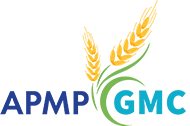By Heather Finch, CF APMP
Dear GMC,
I have a large RFP that requires the response submission to be put into a “slide deck proposal” rather than a standard Word or Excel proposal response. Do you have an example or template for this type of “slide deck proposal” submission? (I checked the APMP resource site with no luck.)
How do I even begin to do this without ending up with a 500-slide deck? Do you have any samples or best practices for this type of response requirement?
Sincerely,
Anonymous
Dear Anonymous,
Your question is indeed a testament to the dynamic nature of our jobs! Yours is not a scenario I have personally encountered, but lucky for me, I have a network of amazing APMP members to whom I could reach out and get ideas. While we were not able to rustle up any templates, here are a few perspectives on the slide deck proposal concept.
One colleague emphasized the need for condensing your points. This odd request may come at the behest of someone who is a visual person who prefers to skim rather than read the content. Think about transforming paragraphs into bullet points, tables, and charts. David Seibert’s webinar on Skim-ability has some takeaways that may be transferrable to your situation. You can find it on the Webinar Archive on our GMC site. Hint, you’ll need a password, which can be found in our email blasts or by reaching out to a friendly GMC board member.
Another approach to this conundrum comes from Nichole Reber, our webinars chair and all-around master proposal wrangler. In her experience, focusing on creating quality graphics does the trick. This may help alleviate your fear of an onerous slide deck because after all, a picture is worth a thousand slides.
Stacey Duwe, our chapter chair and owner of Write Fit Solutions, speaks to the benefits of designing proposals in a slide deck format, because “the presentation style allows us to be a little more creative in the page design and presentation of the material, being more visual rather than content-heavy.” Consider your typical proposal sections and how those might look as a slide deck. For example, the first slide is your cover, the second is your cover letter, the third is your table of contents, the fourth is your executive summary, and so on.
Of course, we all know how unique the requirements in each RFP are, so please reach out if you would like to discuss further!
Do you have a proposal-related question? Use the anonymous form here to submit your question and receive a little advice.
Just a little disclaimer: The advice offered in this column is intended for informational purposes only. Use of this column not intended to replace or substitute for any professional, financial, medical, legal, or other professional advice. This column, its author, and APMP GMC are not responsible for the outcome or results of following any advice in any given situation. You, and only you, are completely responsible for your actions.
Heather first encountered the acronym “RFP” when seeking ways to diversify funding sources for a human services company in 2012 and hasn’t looked back since. Since then, she’s moved on to lead proposal teams in both the commercial and government sectors, refining processes and developing efficiencies along the way.
